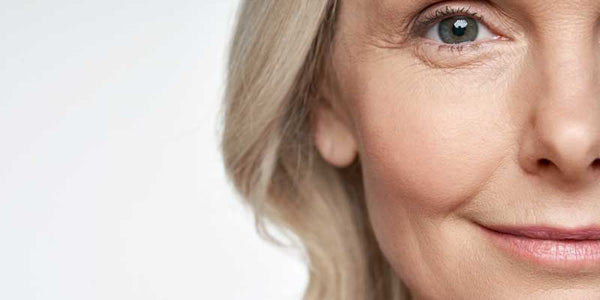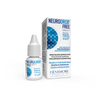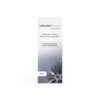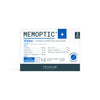Dry eyes: how to improve ocular comfort?

Dry eye is an unpleasant problem encountered by a growing number of people, to such an extent that it is becoming a public health problem. In question, in particular, the evolution of our lifestyles. The lacrimal glands make it possible to produce and evacuate tears, whose role is essential. The tear film forms an interface between the eye and the external environment. Dry eyes may be related to insufficient tear production or excess evaporation. Artificial tears are a good weapon in the treatment of dry eye. In addition, micronutrition has a real interest in particular to overcome the phenomenon of oxidative stress now well identified in this problem.
Anatomy of the lacrimal system and composition of tears
The lacrimal glands
Under each upper eyelid are 2 lacrimal glands (main and accessory) which secrete a liquid equivalent to a saline solution, but also contains proteins, glucose… Tiny channels transport this substance to the surface of the eye.
The eyelids, by their blinking, allow this liquid to be distributed over the entire surface of the eye. It is by the same blinking mechanism that the liquid is evacuated by the point of entry of the lacrimal passages. It then flows through a channel that ends in the nasal cavities.
Meibomian glands
Other important glands are located in the thickness of the eyelids: the Meibomian glands . Their drainage pores open on the edge of the eyelid near the root of the eyelashes. These glands also participate in the production of tears and in particular in its lipid composition. Meibomian gland pathologies are now associated with a term grouping together the pathologies that concern them: meibomian gland dysfunction (MGD) .
An essential composition
The good quality of the tear film therefore depends on the proper functioning of the structures that produce them. In case of dysfunction of one of these systems, the balance of the physiological composition of the tears is broken. Each component has an interest. The richness in fat in particular avoids too rapid evaporation of tears and facilitates good sliding of the eyelids on the globe. Proteins allow adhesion to the surface of the eye.
The role of tears
The tear film performs several functions:
- it lubricates the eye by creating a smooth surface on the cornea, on which the eyelids can easily slide;
- it nourishes the cornea , since the latter is devoid of blood vessels and therefore receives nutrients through the tear film;
- it protects the eye from infections and eliminates impurities that may be deposited there.
It is possible to distinguish two main forms of dry eye: those linked to a defect in secretion and those attributable to an excess of evaporation.
Symptoms of dry eye
Dry eye causes discomfort that can result in a grittiness, itching, burning or stinging sensation on the ocular surface. It can also cause sensitivity to light and cause redness in the eyes or around the eyelids.
Clinical signs and diagnosis
The symptoms that constitute the complaint do not always reflect the clinical involvement. In other words, it is not always easy to establish a correlation between the symptoms and the clinical signs visible on examination.
It is essential to carry out a precise clinical examination, in particular to visualize the damage to the superficial structures of the eye.
In order to facilitate treatment indications, a classification has been established by the ODYSSEY European consensus group (1) . 14 criteria are taken into account in order to best determine the severity of the attack and therefore the therapy to be implemented. All of these criteria define different scores and guide the diagnosis in the form of a decision tree .
Dry eye can lead to various complications among which corneal irritation and eye infections are the most common.
The causes of dry eye
The reasons for consultation for dry eye represent between 15 and 25% of visits to ophthalmology practices. This phenomenon has always existed but it has become much more widespread (2)
External factors
In recent years, environmental, nutritional and lifestyle factors have been implicated. Thus, exhaust gases, dry air with air conditioning or certain heating methods, drafts, etc. can promote the occurrence of dry eyes.
Screen work for more than 7 hours a day is a risk factor for developing dry eye symptoms.
Smoking also plays a negative role, partly because of the smoke, but also because of the oxidative stress it causes.
Wearing contact lenses
Symptoms of eye irritation are common among contact lens wearers. Dry eye in contact lens wearers represents a real risk of damage in the long term. It is therefore advisable to limit or even eliminate the time of wearing lenses. In 12% of cases, this discomfort linked to the wearing of contact lenses led to the discontinuation of their use. A laser correction solution can be offered if the person is a good candidate for this type of treatment.
Certain chronic diseases
Dry eye can be linked to certain autoimmune diseases (rheumatoid arthritis, lupus, etc.). And it can be associated with dry mouth in Gougerot-Sjögren syndrome .
Acne rosacea is quite characteristic because the edges of the eyelids are red and there are red patches on the cheeks and rosacea.
Taking certain medications and other causes
Dryness can be related to taking medications because of their mechanism of action. This is the case, for example, of certain antidepressants or hormonal treatments. Age, menopause or andropause, anomalies in the morphology of the eyelids… are also factors that can cause or aggravate an already determined cause.
Treatments for dry eye
Eliminate triggers and adapt the environment
It is imperative, first of all, to look for the factors favoring drought.
Indeed, certain measures can be taken, when possible, to mitigate the inconvenience:
● reduce exposure time to dry environments: air conditioning, etc.;
● avoid toxic environments: tobacco, indoor and outdoor pollution
● limit the contexts of fixation efforts: computer screen, reading, television, etc.
Compensate the tear film with local treatments
The instillation of thick moisturizing eye drops , called artificial tears , is a usual solution to calm the symptoms. These tear replacement treatments are intended to compensate for the hydration of the eyes and to fight against ocular dryness. They are effective in relieving symptoms if used correctly. Indeed, the fact that they are in the form of a viscous gel can cause more or less unpleasant deposits. Properties vary from product to product. There are more or less viscous and it sometimes takes several tries to find the consistency that best suits a particular person. For the night, the ointment form can be indicated for an action on the duration of sleep.
Micronutrition and the fight against oxidative stress
A vicious circle to be broken
Since tears come from a secretion of the body, one can imagine that their composition is a reflection of the biochemical functioning of the latter. Dry eye generates oxidative stress resulting in increased production of free radicals and leading to a state of chronic inflammation on the surface of the eye. A vicious circle of self-maintenance of inflammatory processes then occurs due to cell damage and activation of the immune system.
Omega-3s to enrich the composition of tears
Studies have shown a positive correlation between taking omega-3 (against placebo) on the reduction of symptoms and signs of dry eye (3) .
Omega-3s help fight inflammation and prevent apoptosis , i.e. the death of cells, in this case those which secrete, in the eye, the components necessary for the tear film. (4) .
Antioxidants to stop inflammation and repair the surface of the eye
The provision of antioxidants is intended to curb oxidative stress. The thin layer (called epithelium) of the ocular surface is a zone of nutritional exchanges . In order to fight against this damage, several micronutrients , known for their antioxidant action, are now well known.
A very recent formulation has been developed, containing in particular polyphenols, vitamins A and E, and would make it possible to obtain promising results (5) .
A 2017 study also suggests that vitamin B12 deficiency may worsen dry eye symptoms (6) . Ensuring that there is no deficiency in this vitamin in patients suffering from dry eye and, if necessary, supplementing it, would therefore be interesting.
Based on this knowledge, antioxidant food supplements are therefore emerging as a complementary treatment option for dry eye.
Sources:
1. Baudouin C, Aragona P, Van Setten G, Rolando M, Irkeç M, Benítez del Castillo J, et al. Diagnosing the severity of dry eye: a clear and practical algorithm. Br J Ophthalmol. 2014 Sep;98(9):1168‑76.
2. Sergheraert L. Dry eye syndrome, a fast-growing pathology. ActualPharm. 2022 Feb;61(613):35‑8.
3. Giannaccare G, Pellegrini M, Sebastiani S, Bernabei F, Roda M, Taroni L, et al. Efficacy of Omega-3 Fatty Acid Supplementation for Treatment of Dry Eye Disease: A Meta-Analysis of Randomized Clinical Trials. Cornea. 2019 May;38(5):565‑73.
4. Roncone M, Bartlett H, Eperjesi F. Essential fatty acids for dry eye: A review. Contact Lens Anterior Eye. 2010 Apr 1;33(2):49‑54.
5. Ng D, Altamirano-Vallejo JC, Gonzalez-De la Rosa A, Navarro-Partida J, Valdez-Garcia JE, Acosta-Gonzalez R, et al. An Oral Polyphenol Formulation to Modulate the Ocular Surface Inflammatory Process and to Improve the Symptomatology Associated with Dry Eye Disease. Nutrients. 2022 Aug 7;14(15):3236.
6. Ozen S, Ozer MA, Akdemir MO. Vitamin B12 deficiency evaluation and treatment in severe dry eye disease with neuropathic ocular pain. Graefes Arch Clin Exp Ophthalmol Albrecht Von Graefes Arch Klin Exp Ophthalmol. 2017 Jun;255(6):1173-7.
Share




